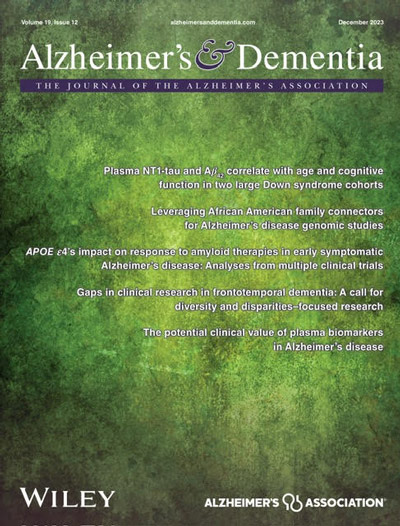Gut microbiota interacts with intrinsic brain activity of patients with amnestic mild cognitive impairment
Abstract
Background
To explore the potential relationships among gut microbiota (GM), local brain spontaneous activity and neuropsychological characteristics in amnestic mild cognitive impairment (aMCI) patients.
Method
Twenty aMCI and 22 healthy control (HC) subjects were recruited. The GM composition was determined by 16S ribosomal RNA gene sequencing. Resting-state functional magnetic resonance imaging scans were performed, and fractional amplitude of low-frequency fluctuations (fALFF) was calculated across different frequencies. Spearman or Pearson correlation analysis was used to analyze the relationship between spontaneous brain activity and cognitive function, GM composition.
Result
aMCI patients had altered GM state and local spontaneous brain activity as compared with HC subjects. Correlation analysis showed that aMCI and HC groups had different “GM–intrinsic brain activity interaction” patterns. In aMCI group, the relative abundance (RA) of Bacteroides from phylum to genus level was positively correlated with fALFF value in the right middle temporal gyrus in slow 4 and negatively with that of cerebellar vermis in typical band. The Clostridiaceae RA was positively correlated with the fALFF value of the right lingual gyrus in the typical band (0.01-0.08 Hz). The Clostridiaceae and Blautia RA was positively correlated with the fALFF value of the left cerebellum in slow 4 (0.027–0.073 Hz). At slow 5 (0.01–0.027 Hz), the Firmicutes RA was negatively correlated with the fALFF value in the right inferior frontal gyrus. Correlation analysis showed that Clostridium members (Lachnospiraceae and Blautia) were positively while Veillonellaceae was negatively linked with cognition test. While Bacteroides was positively correlated with attention and computation, and negatively correlated with the three-step command score.
Conclusion
aMCI patients have a specific GM-intrinsic brain activity-cognitive function interaction pattern.

 求助内容:
求助内容: 应助结果提醒方式:
应助结果提醒方式:


